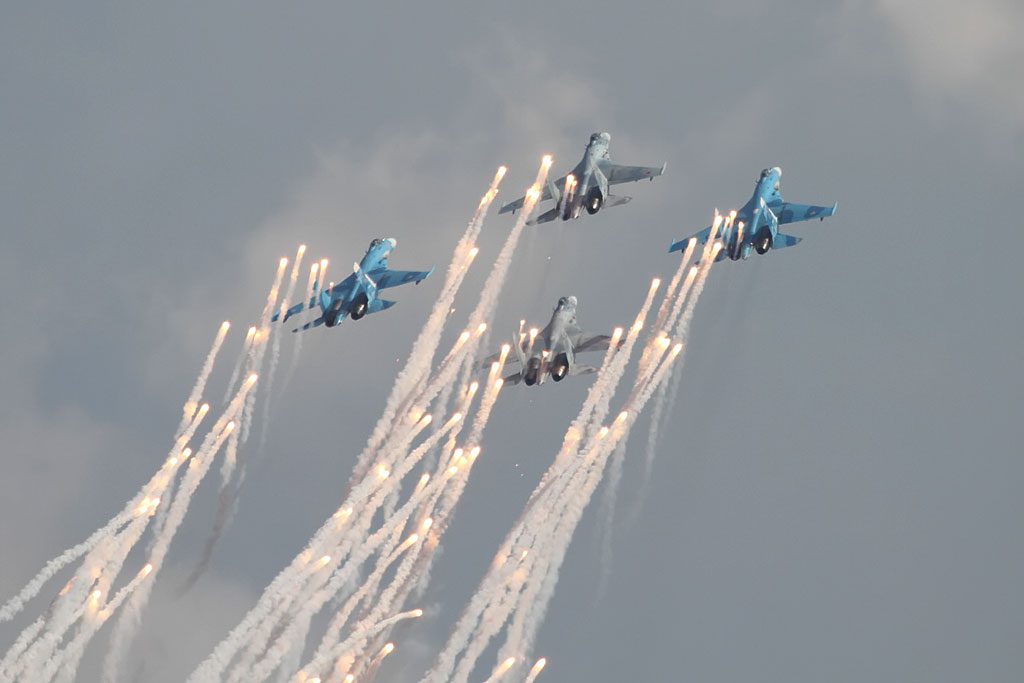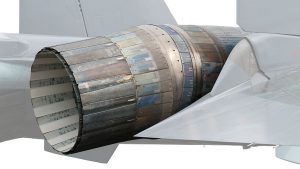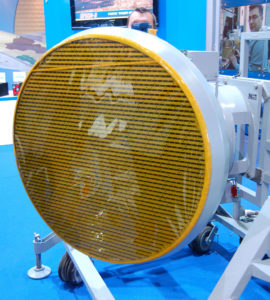The Sukhoi Su-35 Multirole Fighter
The Sukhoi Su-35, designated as ‘Flanker-E’ by NATO, is a Russian-made single seat, twin-engine multirole fighter. It is based on the previous existing design of the Su-27 Flanker. The Su-35 entered service in 2007 and has proven itself a very capable adversary to the current generation of American-made fighters such as the F-15 Eagle, the F-18, and even the F-35 Lightning II. The biggest confusion surrounding the Sukhoi Su-35 is the fact that conflicting reports suggest it is actually the label of two separate fighter jet aircraft. The first is a heavily modified Su-27 and the other features much more aggressive canards reminiscent of the Eurofighter and the Saab Gripen.
4.5 Generation Fighter
Many defense analysts concluded the Sukhoi Su-35 is a stop-gap measure for Russia. It will serve until full line production and release of a heavily anticipated fifth-generation stealth multirole-fighter known as the Sukhoi PAK FA. The Su-35 was designed in the late 1980s to rival and match existing fourth generation fighter aircraft such as the F-15 Eagle, the F-14 Tomcat, and F/A-18 Super Hornet.

Plans for production were delayed by the fall of the Soviet Union due to funding and budgetary allocations. The Russian Federation has renewed interest in the aircraft. It is not a stealth fighter by design, but appears to be an air superiority aircraft. In many ways, the Su-35 matches the F-15 Eagle’s capacity to carry advanced air-to-air and air-to-surface missiles across 12 weapons slots.

Sukhoi Su-35 vs F-22 Raptor
One thing that makes it a modern generation of fighter aircraft are the independently movable nozzles on the exhaust of its Saturn AL-41F1S turbofans. These gives the Su-35MK fantastic maneuverability. With the ability to quickly redirect thrust, the Su-35 can match or exceed the evasion techniques of existing fourth generation fighter aircraft and even rival newer models such as the F-22 Raptor.
Deployment
According to 2016 estimates, 48 Su-35 aircraft have been delivered. There is approximately 184 F-22 Raptor’s in service currently. But because the F-22 Raptor program was scrapped in favor of the upcoming F-35 Lightning II, that fleet is not expected to grow any more.
Performance
Between the F-22 Raptor and the Sukhoi Su-35 Flanker-E, the Su-35 is a little slower but it beats the F-22 Raptor in maneuverability. Unfortunately for the Su-35 Flanker-E, it would need to be close with the F-22 Raptor to be effective.

Beyond-Visual-Range Targeting
The F-22 Raptor’s radar cross section is theorized to be approximately the size of a marble. This insane stat is according to defense analysts cited in a Business Insider review. The Su-35’s long-range air-to-air options are quite ineffective against this size of cross-section. Also, the F-22 Raptor’s avionics suite can engage counterparts long before eyes can lock on to an enemy.
Quoted from defense analyst Justin Bronk
Whilst the Su-35 does have the hypothetical capability to detect the F-22 at close ranges using its IRST (Infa-Red Search and Tracking) and potentially the Irbis-E radar, both sensors would have to be cued to focus on exactly the right part of sky to have a chance of generating a target track. By contrast, the F-22 will know exactly where the Su-35 is at extremely long range and can position for complete control of the engagement from the outset with superior kinematics.
Thus, the Su-35 Flanker-E, while more than a match for existing fourth generation fighters, would be hard-pressed to effectively engage F-22 Raptors. And, being outnumbered at a ratio of 1:6, would quickly find itself outgunned. That said, the predominant aircraft in NATO is not an F-22 or even an F-35 Lightning II. The Su-35MK may still prove a more than adequate adversary for years to come.
See Su-35 Specifications
| Length: 72 feet 9 inches |
| Height: 22 feet 5 inches |
| Wingspan: 49 feet 9 inches |
| Max Speed: 1,550 mph |
| Ceiling: 59,050 feet |
| Maximum Weight: 74,956 pounds |
| Combat Range: 2,237 miles |
| Engine: Two Lyulka AL-31FM afterburning turbofans, 30,855 lb thrust each |
| Crew: One |
| Armament:One GSh-30-1 30mm cannon with 150 rounds, plus up to 17,636 lbs. payload on eleven external points |

